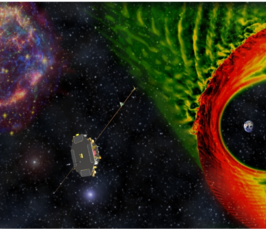Near-Earth space as a laboratory: a key to the plasma universe
Institutskolloquium
- Datum: 14.07.2017
- Uhrzeit: 10:30 - 11:40
- Vortragende(r): Franscesco Valentini
- Dipartimento di Fisica, Università della Calabria, Rende (CS), Italy
- Ort: Garching und Greifswald
- Raum: Hörsaal D2 (Übertragung nach HGW S1)
- Gastgeber: IPP

The massive campaign of space exploration carried out in the past century has revealed that the vast majority of ordinary matter in the Universe is in the plasma state. The hot dilute plasma between galaxies and galaxy clusters dominates baryonic matter and can also be found within galaxies, for example in the interstellar medium, outer atmospheres and stellar winds of stars, and coronas of accretion disks. Astrophysical plasmas are generally turbulent, and dissipation of turbulent fluctuations leads to continuous plasma heating and acceleration of charged particles. The basic plasma processes of heating and energization in turbulent magnetized plasmas are of fundamental importance for the comprehension of the evolution of the Universe. This is one of the main motivations of the Turbulence Heating ObserveR (THOR) proposal, a candidate for the next M4 space mission by the European Space Agency (ESA). THOR is a fundamental plasma physics mission, which uses near-Earth space as its laboratory and which has been designed to directly address the ESA Cosmic Vision theme "How does the Solar System work?", by studying the basic processes occurring "From the Sun to the edge of the Solar System". The scientific focus of the THOR project has not only attracted large support for the mission from the laboratory, solar and astrophysical plasma communities, but it has also already initiated many synergetic studies between them. To achieve its scientific goal, THOR will make in situ measurements with unprecedented resolution in specific regions in near-Earth space: the pristine solar wind, the Earth’s bow shock and interplanetary shocks, and the compressed solar wind regions downstream of shocks. These regions are selected because of their different turbulence properties, and reflect similar astrophysical environments. Here, we present the science of the THOR mission and we discuss implications ofTHOR observations for space, astrophysical and laboratory turbulent plasmas. Moreover, we will present the activities of the Numerical Simulation Support Team, that provides scientific support to the design phase of the THOR satellite.